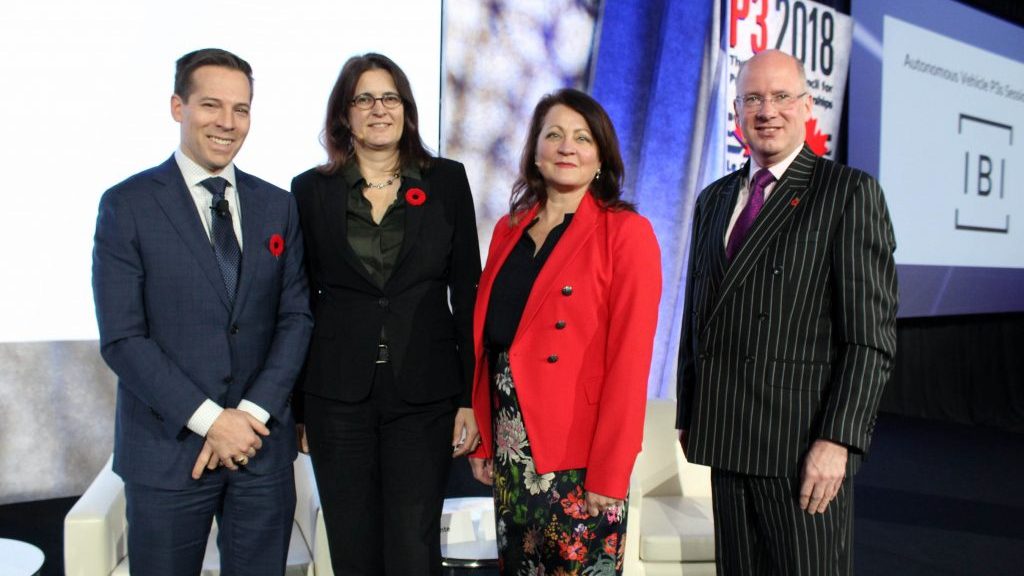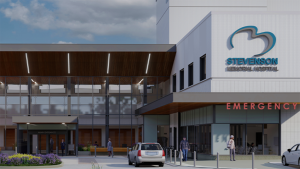How public-private partnerships can evolve and help deliver critical transit infrastructure was explored by three transit experts at the recent Canadian Council for Public-Private Partnerships (CCPPP) national conference in Toronto.
Participants for the Getting On Board Next-Gen Transit panel spanned Ontario, British Columbia and the United Kingdom and the moderator was SNC-Lavalin executive vice-president and managing director of capital Chantal Sorel.
While initially public-private partnerships (P3s) were notable when they came with a price tag of $1 billion, Sorel said, now costs of $2 to $3 billion are the average and the projects have become increasingly complex and challenging to manage.
Infrastructure Ontario president and CEO and CCPPP director Ehren Cory said to tackle large projects his organization looks at the size of the task but also the risk involved while taking care not to break a large task into smaller pieces.
“Taking a project that has to work as a system and breaking it into chunks with different government agencies handling different aspects is a risky proposition,” Cory said.
“By and large we try to take down the risk profile of a project. If there’s obvious things we can do to take the risk down, we’ll do that up front,” he added.
Transport for Greater Manchester chief executive Jon Lamonte pointed to initial consulting with the private sector as a way to ensure greater harmony and manage expectations and cited Southern Rail’s link to Heathrow Airport as an example.
“There’s still a procurement process to go through, but a ‘soft market testing’ is a good way to introduce a project before a formalized process,” Lamonte said.
Sorel also noted while many P3 projects are delivered on time and on budget, transit projects are frequently more challenging, and asked the panel to explain the differences between transit and other forms of infrastructure.
There’s a lot we can do but we need to go in knowing things will change
— Amanda Farrell
Partnerships BC
“There’s no perfect answer,” Cory said. “Transit, and for that matter buildings, are all large, complex projects both in terms of construction and maintenance, and it isn’t always going to go perfectly.”
In transit’s case, construction is almost always within an established urban landscape, he added, and there is a need to constantly communicate and be proactive with a large number of stakeholders.
“The level of partnering between local and global firms is a great strength, but it also has its growing pains,” Cory noted.
Another pinch point for P3 projects is expansion once the project is built, Sorel said, citing the Canada Line in Vancouver.
“The Canada Line is extremely successful, but it’s a victim of its own success,” Partnerships BC president and CEO Amanda Farrell said.
“It was one of the first P3 projects we did, and we spent a lot of time listening to TransLink, because the things that concern them about the Canada Line model aren’t things the public would see,” she said. “For example, how do we in a reasonable amount of time expand the service?”
“There’s a lot we can do but we need to go in knowing things will change, and that there’s a lot of small things and details we need to think of,” Farrell added.
Cory agreed service changes or expansion is one of the more challenging aspects of a P3 project.
“Capital is the easy part. What’s hard is changes in service performance…do we expand or add a station in the middle of the transit network?” Cory said.
All three panellists agreed current political shifts are an additional challenge to infrastructure development. Sorel pointed to both the new Ontario government’s stated desire to cut costs and the lack of any P3 projects in the U.K.’s latest budget.
Lamonte said shrinking budgets at the local level stifles the ability to tackle infrastructure in the U.K.
“They’ve cut local authority budgets by 37 per cent, so they have a lower discretionary spend and they can’t tackle large projects,” he said.
Infrastructure Ontario is not releasing a pipeline this year, Cory said, though he assured conference attendees one is planned for later in the year.
“The new government is cost conscious and they’re doing really systematic reviews of expenditures and looking at projects quite closely, so in the coming months we will have a pipeline to publish,” Cory said.
“But this government has made clear and part of their messaging from day one has been that they want to work with the private sector. While they’re cost conscious, they’re also very aware of the value of infrastructure projects to the people of Ontario.”










Recent Comments